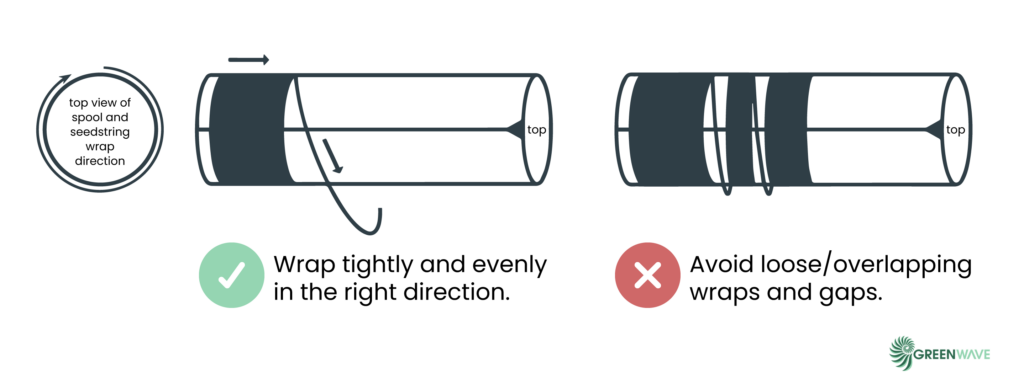Back to: Propagating Seedstring from Gametophytes
Consider making a spool winding device/machine to speed up the winding process. Other nurseries have used anything from a hand drill and a paint roller to a sophisticated automated design. You want the spool to turn quickly and with as little friction as possible. While you are winding your spools, be on the lookout for a few main factors as quality control: no gaps between wraps, no overlapping wraps, and tight wraps. Gaps between wraps will result in inconsistent lengths of seedstring on your spools. Overlapping wraps can cause issues when seeding your lines on your farm by creating snags or loops. Loose wraps can result in seedstring sliding off of spools in the nursery, during transport, or during seeding, as the seedstring will loosen up a little once it is wet. All of these issues can significantly impact your spool quality and make it difficult to evenly distribute your gametophytes on the spool when painting. Always wrap the seedstring around your spools in the clockwise direction, if looking down at your spool from the top, so that your seedstring will wrap around your growline in the same direction as the lay of the growline. Pull the ends of your seedstring through the slit to keep it tight. It may also be helpful to tie a bowline or other loop knot at the end of your seedstring so you can use it to pull on when you are seeding in the field. Once a spool is wound, give it a unique ID like a number for tracking during the season.

GreenWave suggests using Hortimare’s custom-made 1.2 mm braided seedstring from Langman for gametophyte seeding. Order your seedstring early in the calendar year to ensure you receive your order in time for the start of the nursery season. Other nurseries have had luck using other seedstring types in the past; to learn more about this, you can search the Hub Community page for previous posts, or post a question yourself. Generally, it is important to find out as much as you can about the manufacturing process and what chemicals the string may have come in contact with. The Langman seedstring is custom-made by a process that does not involve added chemicals. Other seedstrings may need to be soaked after it is wound onto seed spools but before seeding to allow any excess chemicals to leach out.